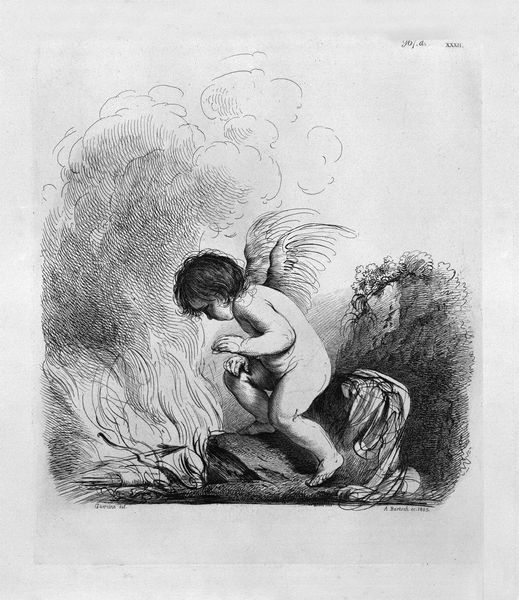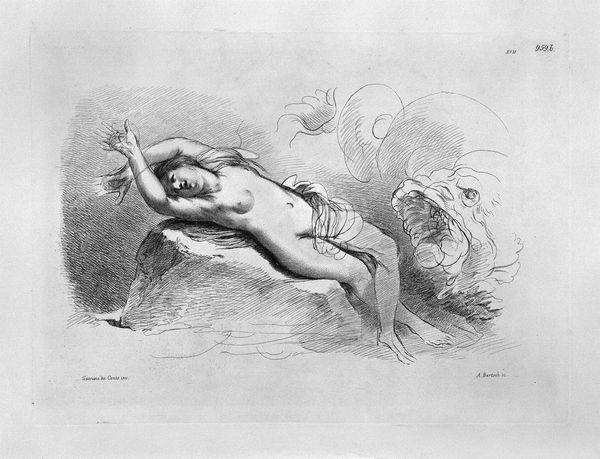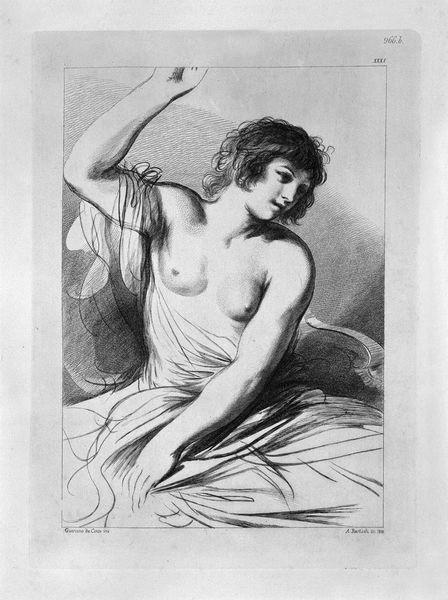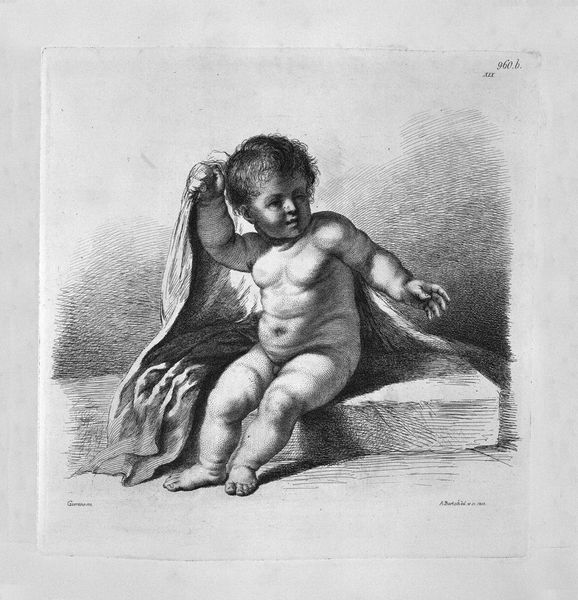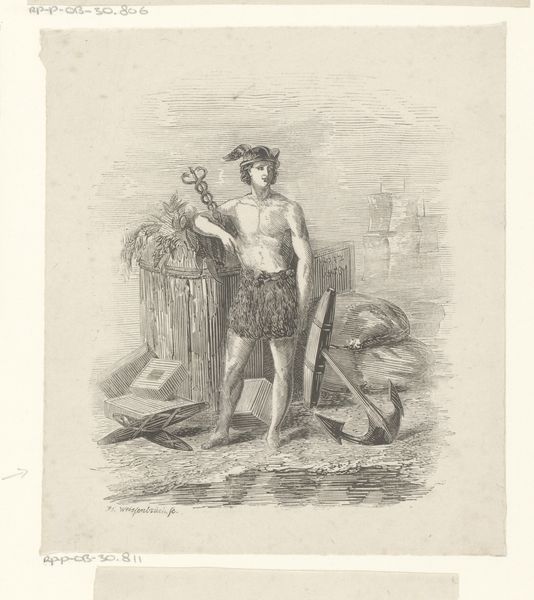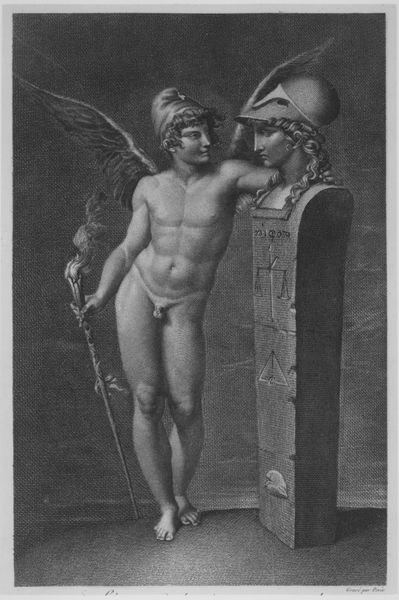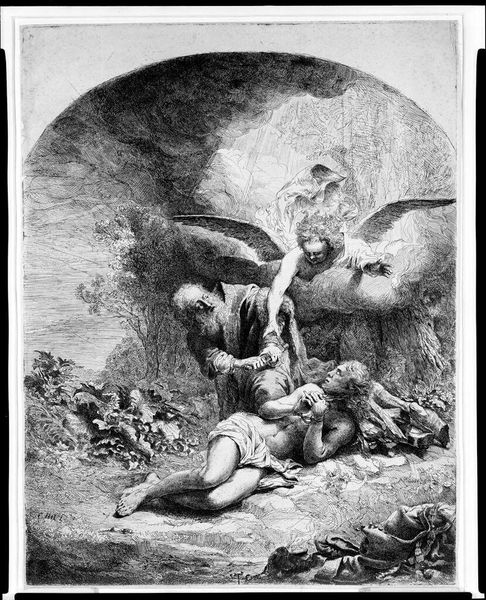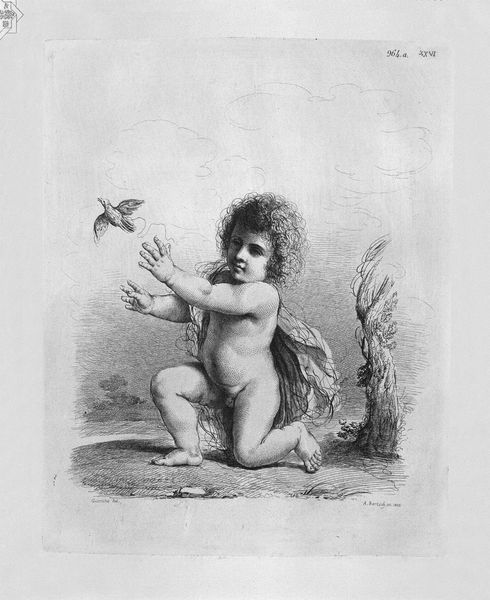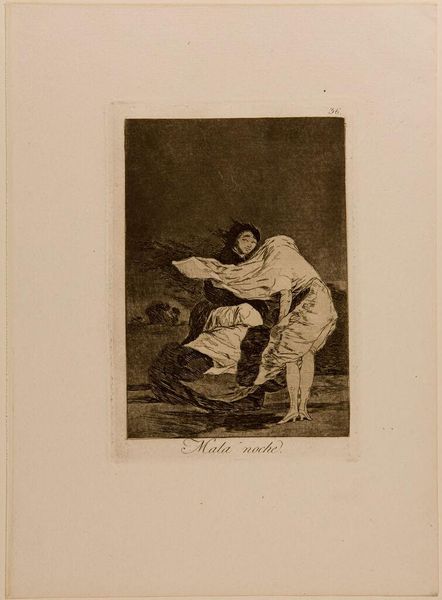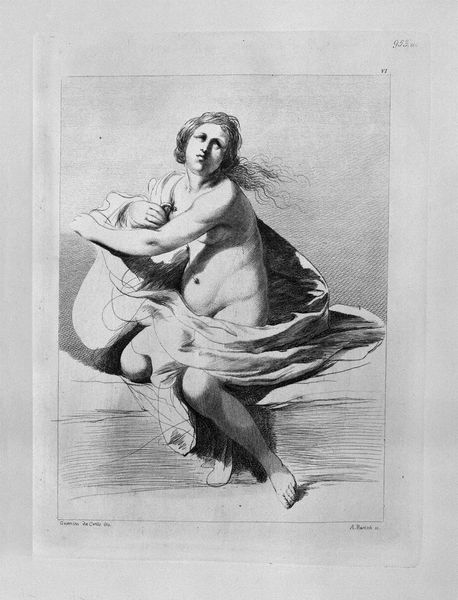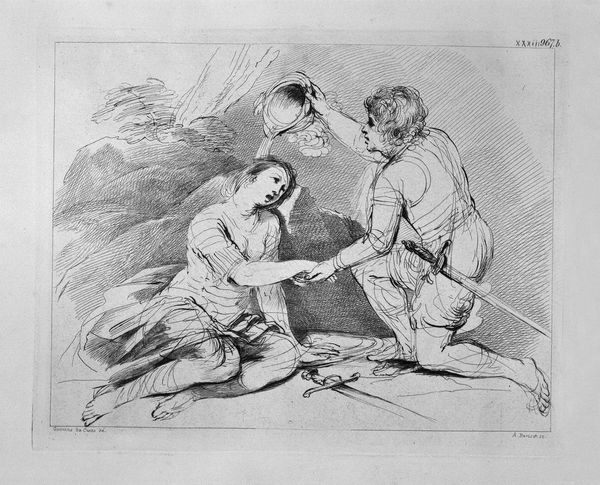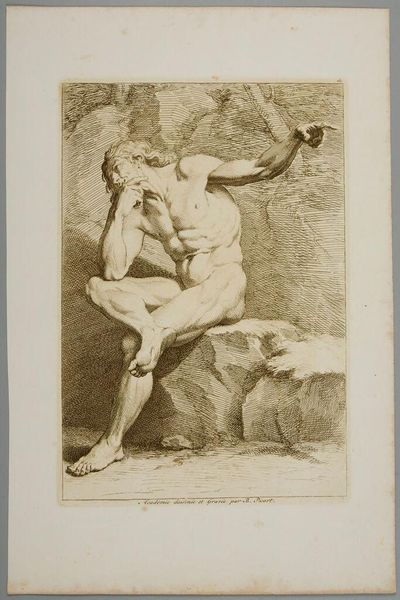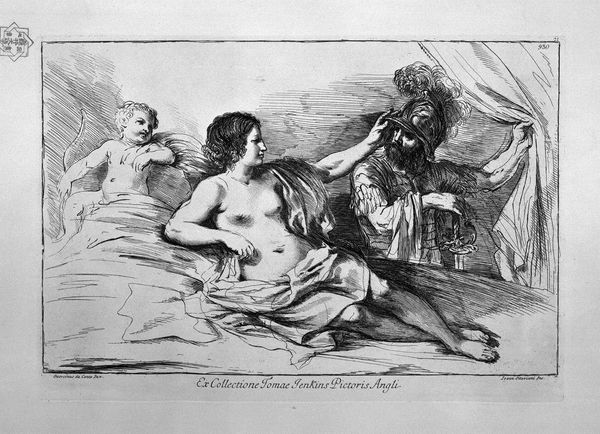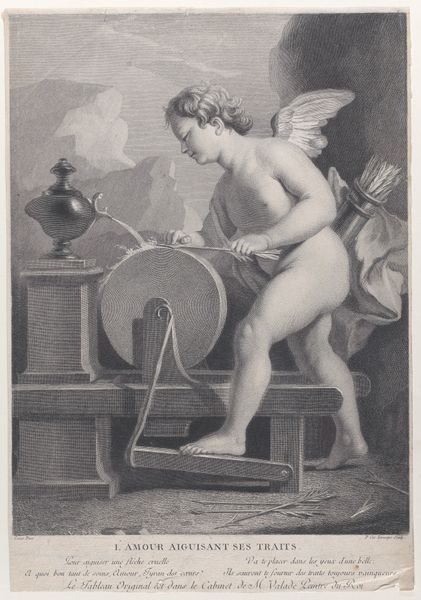
print, engraving
#
portrait
#
allegory
#
baroque
# print
#
classical-realism
#
figuration
#
christianity
#
line
#
portrait drawing
#
nude
#
engraving
Copyright: Public domain
Editor: Here we have "Love Chooses an Arrow in the Quiver," a print by Guercino. It features Cupid examining his arrows. There's something quite solemn about the image, especially given its subject matter. How do you interpret this work, especially considering the artist’s background and the Baroque era? Curator: Well, it is compelling how Guercino portrays Cupid here, don't you think? Not as some carefree cherub, but in a moment laden with potential consequences. Considering the context, think about the sociopolitical climate during the Baroque period. Where does an artwork like this fit into discourses around power, control, and the societal expectations placed upon individuals? Especially young ones. Editor: That’s interesting. I hadn't thought about the implications of power dynamics within the allegory. I mostly saw a kind of innocent choice, the beginning of love. Curator: Precisely. Now, consider the nude form depicted here. What messages might that convey in connection to this print functioning as an allegory? Where does this image fit in the history of the male nude in art? The "innocence" you perceive is definitely cultivated. Editor: So you are saying there may be an historical narrative about the role of children or male youth within political culture, encoded within this seemingly innocent representation of a child choosing an arrow? I thought it was just an illustration about choosing love. Curator: And doesn't love become, itself, a highly-charged site of cultural and political conflict? Understanding such period symbolism will certainly encourage you to further unravel any underlying political or social message in this work. Thank you for your perspective as well. Editor: That is so cool. Now I see the artwork and its symbolism more broadly. Curator: Great, I am very glad that my perspective provided something new to think about!
Comments
No comments
Be the first to comment and join the conversation on the ultimate creative platform.
